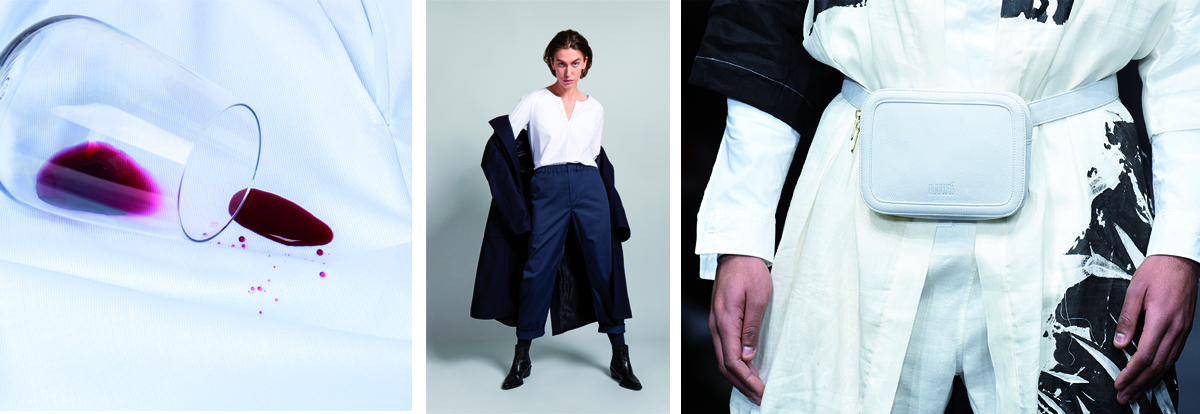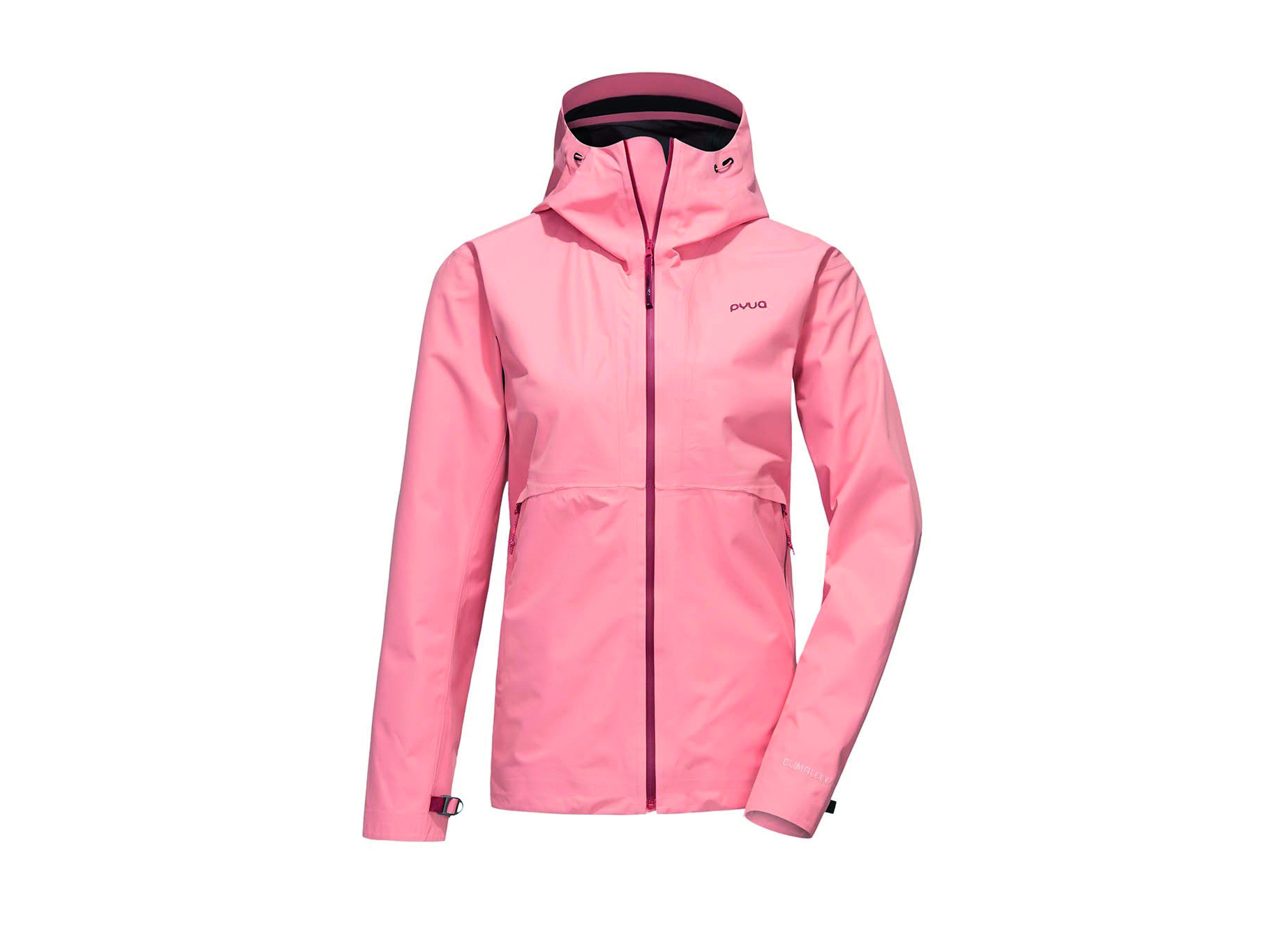Jeans are fashionable evergreens. They’re not just romping around en masse in the closet. They are usually also mass-produced. Under the worst social and ecological conditions. It is not for nothing that people speak of the “dirtiest piece of clothing” in the world. The brands in the GREENSTYLE Jeans Guide prove that darling denim is also a good choice.
Continue readingCHANGING THE FASHION GAME
© DAWN denim by Marlen Müller, Alexander Koerner, Getty Images for MBFW, nat-2
From rose viscose to circularity – the sustainable fashion scene speaks (not only!) About these trends and brands
Sustainable fashion largely foregoes trends – at least optical ones. It is less about “Brown is the new black” or “Welcome back Flowers” & Co. Circular economy, up, down, recycling and innovative materials for a responsible fashion future are the topics in the sustainable fashion scene turns. Changing the fashion game
The range of eco-fairly produced fashion has never been as large as it is today – on the runways from Berlin to Milan, at the Big Bang Awards from Amfar to Oscar around the world as well as at the conventional fashion fairs in Berlin. In addition to NEONYT (Messe Frankfurt), the world’s largest trade fair for sustainable fashion, which was founded by Magdalena Schaffrin eleven years ago and has long since anchored sustainability in its DNA, conventional trade fairs have now also discovered the contemporary theme for themselves different formats on the agenda.
Sustainable fashion has come to stay.
What was announced in January 2019 has continued consistently: Because sustainable fashion has come to stay. And, finally, it is also more readily available to consumers through superbly curated online shops such as staiy.com, thewearness.com and avantgardress.com
NEONYT
100 percent consistent and always in the DNA – the B2B trade fair, or more precisely the global hub for fashion, sustainability and innovation. Who found his new home in “Hangar 4” in Berlin Tempelhof in January 2020 and has never been as homogeneous as this season. 220 brands have brought all facets of sustainable fashion from organic cotton to innovative fibers (including Lenzing, rose viscose from Like A Bird), certification programs (e.g. OEKO-TEX) and textile seals (including GOTS etc.) on the display.
“Neonyt sees sustainability not only as a fashion trend, but as a holistic innovation process for the entire industry.” Olaf Schmidt, Vice President Textiles and Textile Technologies (Messe Frankfurt)

NEONYT Show
Definitely trend-setting and a highlight with maximum radiance has been the NEONYT fashion show since January 2019, which is now being shown in the official Mercedes-Benz Fashion Week show location. With the multi-brand looks of national and international eco brands, stylist and co-founder of Fashion Council Germany Claudia Hofmann has staged series productions that are second to none. The goal? Raise sustainable fashion to an international level. With content-laden styles, she has washed the German magazine elite into the front row three seasons in a row and given sustainable fashion a new image. Mission definitely accomplished.

The denim offensive. It´s possible!
A really important topic considering that denim production is the No. 1 polluter in the textile industry. The World Bank estimates that as many as 17 to 20 percent of global water pollution results from dyeing and finishing textiles. Sustainable denim brands such as DAWN Denim, ONE OFF Sue, Mud Jeans, Wunderwerk and Goodsociety show that this does not have to be the case. The visual difference? None. The new denims differ only in the way they are produced. Thousands of liters of water and chemicals are required for conventional denim production and endanger people and nature. Smart detox campaigns by innovative denim brands show that our favorite blue fabric can also be produced with a significantly lower impact on people and nature.

Smart denim alternatives: detox, recycling & co.
Organic cotton (e.g. armedangels, hessnatur), recycled cotton and PET for #lowimpact denim (e.g. DAWN denim), circular approaches such as leasing (e.g. mud jeans), repair and bring-back concepts (e.g. nudie jeans) – the The list of smart alternatives to water and pesticide-intensive cotton can be continued for a long time. GOOD news: New brands and capsule collections are constantly coming onto the market that make the denim industry better with technological innovations (e.g. Dry Ice by DD Garment Solutions) and other sustainable developments.

The new new: material innovations, circularity & Co.
A key characteristic of sustainable fashion? The further development. This is not all about “beautiful” and aesthetics. This is about aesthetic alternatives, innovations and approaches that try to further reduce the impact of fashion on people and nature. These include smart methods of saving water, optimizing the dyeing process, avoiding pesticides and chemicals as well as innovative materials that do not waste new resources and of course the further development towards a circular economy with topics such as recycling and upcycling.

Algae, hay and garbage: innovative materials
Hay, mushrooms, coffee, roses, PET, moss, glass, wood or with the skeleton leaves of a rubber tree are the materials that Sebastian Thies uses for his consistently excellent sneaker label nat-2 from Garching near Munich. The Spanish brand Ecoalf has given its sneakers made of recycled sea plastic (outer material) a sole made of algae. Christina Bussmann has been producing bags made of piñatex (also known as ‘pineapple leather’) for years. Even more new: dresses made from rose viscose, a material that not only feels good against the skin, but is compostable, and shirts made from coffee carbon that are made from waste from the coffee industry (both like a bird).
Apple pomace is much too good for organic waste. Hannes Parth, frumat
Cartina, an exciting material made from recycled paper, e.g. uses the Braunschweig pocket label Humor Noir for its vegan bags and Appleskin, produced from apple pomace, which is produced when apples are pressed and works as a deceptively genuine leather substitute for bags (including Nuuwai). Elsien Gringhuis works with dirt-repellent fabrics that need to be washed less often. Manaomea works with fabric remnants (including AA gold) and uses them to make pencils.

One rubbish, the other textile
The subject of marine litter is no longer new, but is still incredibly important, and has meanwhile found a meaningful use in a wide variety of clothing and accessories. In addition to sneaker and backpack brands, the swimwear segment in particular has discovered these marine finds and made them usable. Brands that take advantage of plastic waste and thus make their contribution to cleaning the oceans include Boochen, Mymarini, Margaret and Hermione.

The next big thing: Circularity
Nothing works without circularity. And that’s good. Because in the past 15 years the production volume of the fashion industry has doubled. The individual item of clothing is worn less and less and is disposed of faster. Just one percent of all textiles are recycled. That needs to change. Textiles have to be returned to the system and recycled. The German outdoor label Pyua, for example, only develops high-quality functional clothing made from recycled or recyclable polyester materials that they can use 100 percent in a closed cycle. Mud Jeans takes a similar approach to denim. Thanks to two investors, the Dutch jeans brand, which currently uses 40 percent recycled cotton, will be able to develop completely circular jeans from 100 percent old jeans. Until then, you can continue to lease jeans and thus close the cycle.
Reduce, reuse, recycle.
The Change of Fashion is now – NEONYT’s claim – is more realistic than ever. With innovative concepts and the awareness that any kind of change is not only inevitable, but necessary.
According to the Fashion Waste Index (Labfresh), Germany has secured 10th place among the most textile-polluting countries in Europe. We generate just under five kilograms of textile waste per capita. Only 500 grams can be recycled, and 400 grams can be recycled. The remaining almost three kilograms are burned (1.2 kg) or land in the landfill. (2.7 kg). Means: “Buy less but better!”



